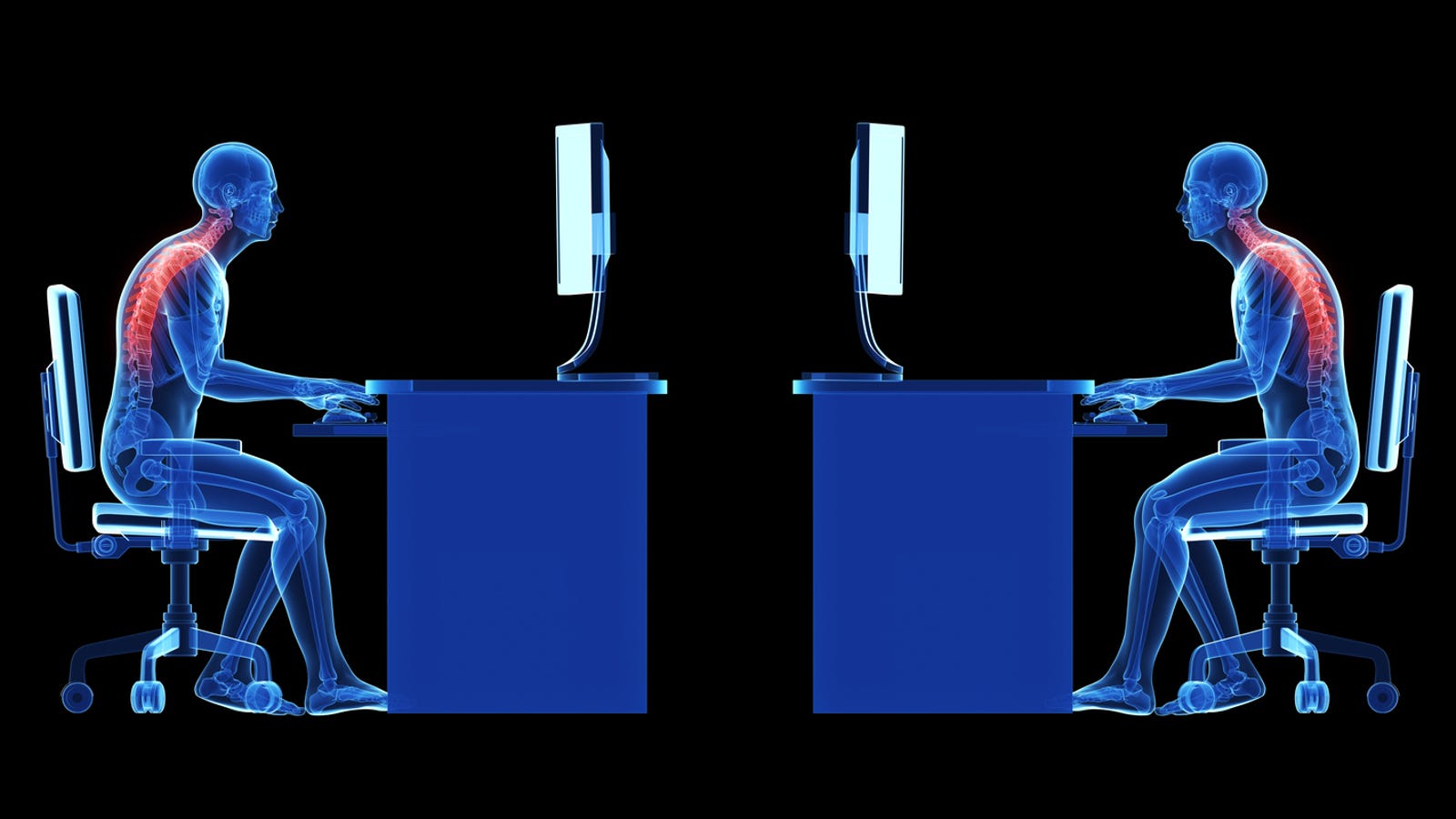
Image source: https://i.kinja-img.com/gawker-media/image/upload/s--yRJQ8WwX--/c_fill,fl_progressive,g_center,h_900,q_80,w_1600/1492236004630237224.jpg
Most of us spend endless hours at our computers, day in and day out, either at work or at home on the Internet. To make matters worse, many of us use laptops. How often have you seen someone in Starbucks or at the airport hunched over their laptop? Obviously, this is far from the correct computer posture.
Bad computer posture invariably leads to forward head posture, one of the most common abnormal postures in our society. Ninety percent of the population has some degree of forward head posture. Left uncorrected, this condition can cause not only head, neck and TMJ problems, but also mid-back and low-back problems. It can literally cut years off your life.
Computer posture correction entails the proper equipment placement, the correct viewing angle and the proper typing height of your computer. This, combined with the correct keyboard posture, can significantly reduce muscular-skeletal strain in the muscles and joints of your shoulders, neck, back and arm.
Here are a few tips to help improve your computer posture:
1. Ensure that you desk and computer screen are at the correct height. You should be looking straight ahead at your screen and not down.
2. Keep your back straight. Sit in an upright, straight position at all times. Your lower back should be supported by your chair.
3. Do not slouch. This is implied by sitting up straight. Remember that slouching leads to bad posture.
4. Stretch often. Stretching will help relieve the stress in your muscles and joints and will increase your flexibility and range of motion.
5. Use an ergonomically designed, comfortable chair that promotes good posture. The chair needs to have proper back lumbar support and you need to make use of it.
6. Take a break every thirty minutes. Your spine is made for motion not sitting in a chair for prolonged periods of time. Get up and take a walk. Stretch and recharge your stiff muscles.
7. Use a posture cushion at home that is designed to reverse bad and forward head posture. Posture cushions are a passive and comfortable way to help stretch over-used muscles and strengthen the neglected muscles.
If you are feeling any kind of discomfort while working at your computer, you should definitely evaluate your computer posture. Sitting at your computer and doing the same thing over and over again creates muscle imbalance. Muscles that are used repetitively over-strengthen, while the unused muscles weaken. Your joints begin to move unevenly, causing stress, and ultimately joint breakdown. This is one of the reasons why you should take a break every thirty minutes or so.
By becoming more aware of the causes of your bad posture and following these simple tips, you will be well on your way to developing the correct computer posture and living a long, healthy and pain-free life.
